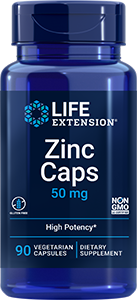
Newsletter
Newsletter
Popular antioxidant linked to pain relief

People with pain of unknown causes who took alpha-lipoic acid (ALA) experienced less pain than a placebo group, a double-blind study in the December 2021 issue of Biomedicine & Pharmacotherapy revealed.1
According to the study authors, these findings suggest that this three-decades-old ingredient might be a viable option for patients with unknown causes of joint, muscle or nerve pain. “The use of ALA…represents an interesting option, especially in primary pain with unknown etiology where no specifically-targeted drug can be selected, and where symptomatic drugs may not always be effective but may be associated with serious adverse effects under prolonged treatment,” wrote Cristina Esposito of University of Naples Federico II and associates.
This isn’t the first study to connect ALA, which occurs in small amounts in foods and is made in the body, to relief of various types of acute and chronic pain. Previous research has linked ALA intake with improvements in pain among patients with migraine, back pain, carpal tunnel syndrome and burning mouth syndrome. It’s also been shown to relieve neuropathic symptoms, including pain, in people with diabetes.
This most recent trial enrolled 210 nondiabetic men and women with mild or moderate joint pain, neuropathic pain or muscle pain of unknown cause. Participants received 800 mg or 400 mg ALA per day or a daily placebo. The results? People who received ALA had a significant improvement in their pain after two months of intake, while the placebo group didn’t report a difference. Further analysis did not find a difference in pain relief among the different types of idiopathic pain – ALA was similarly effective for all sources of pain considered. It was also shown to be safe and well-tolerated.
“The management of idiopathic pain is a real challenge for physicians, as they cannot treat the causes underlying this symptom but can only relieve the pain with the use of symptomatic drugs which generally have a good and rapid efficacy, although in some cases possess limited efficacy and considerable side effects,” the authors noted. “Thus, in the absence of a diagnosis of pain-causing disease, the use of ALA…which according to current legislation is not intended to treat or prevent diseases in humans and is addressed towards the general population, could be considered as a feasible option both in the context of general practice and in specialist settings where appropriate, bearing in mind the safety of ALA…in comparison with that of commonly-used analgesic drugs and its efficacy in pain treatment.”
Products
Apply What You've Learned: Pain
- Although pain has many possible causes, it is often treated with similar drugs. These compounds have possible side effects and are, in some cases, addictive. Your best bet is to try to uncover the source of your pain—so you and your healthcare provider will know the best way to treat it.
- You can fight back against pain with integrative techniques. Acupuncture, massage, physical therapy, biofeedback, transcutaneous electrical nerve stimulation (TENS) devices, safe exercise and other methods may help.2
- Your diet may play a role in your comfort level. Fasting; following a high protein, low carbohydrate diet; eating a vegetarian diet; and/or choosing foods that are high in antioxidants may be helpful for people suffering from chronic discomfort.3-5
- If you are experiencing pain, don’t tough it out. Chronic pain can cause changes in the brain that impact its function, which could lead to cognitive and behavioral impairments.6 Seek the help of a health care provider.
References
- Esposito C et al. Biomed Pharmacother. 2021 Oct 12;144:112308.
- “Non-drug pain management.” Medline Plus. U.S. National Library of Medicine. Updated 10 Aug 2021. https://medlineplus.gov/nondrugpainmanagement.html
- Tennant F. Pract Pain Manag. 2011;11(6):1-2.
- Müller H et al. Scand J Rheumatol. 2001;30(1):1-10.
- Tall JM et al. Clin J Pain. Jan-Feb 2004;20(1):19-26.
- Baliki MN et al. J Neurosci. 2008 Feb 6;28(6):1398-403.
Featured Life Extension Magazine® Article
Boost joint mobility and reduce joint pain, by Michael Downey
Combining two herbs long employed in traditional Indian medicine was recently found to decrease joint stiffness and discomfort in people who experienced nonarthritic knee joint pain after exercise.
Among other uses, turmeric root and the leaves and seeds of the tamarind tree have been used to maintain inflammation at a healthy level. A trial in which participants with knee joint discomfort were given one of two doses of a blend of extracts of these herbs or a placebo for 90 days resulted in improvements in six-minute walking distance, stair climbing, pain, arthritis assessments and knee flexion range of motion among those who received either dose of the herbal combination in comparison with the placebo. In the six-minute walking distance test, improvement was seen as early as 14 days.
What's Hot
Health Concern
Vitamin D associated with reduced need for opioid drugs
A randomized trial reported on July 23, 2021 in Cancers found a reduced need for pain relief and less fatigue among cancer patients who received twelve weeks of high dose vitamin D.

Chronic Pain
This protocol discusses conventional medical treatments for chronic pain and how natural interventions may be beneficial, as well as several types of dietary interventions to consider.
Related Life Extension Magazine® Articles

Break the Cycle of Chronic Pain
Two natural compounds have been identified that safely reduce underlying causes of pain. A human study shows one of these ingredients is more effective than ibuprofen.

Manage Chronic Pain With Natural Therapies
Dr. Chris Kleronomos takes a highly comprehensive approach to pain management. He explains how natural medicine, acupuncture, chiropractic, psychology, diet, biofeedback, functional nutrition, and other therapies can safely alleviate pain without addictive drugs.
Wellness U
Knowledge is power, especially when it comes to your health. Register to sign up for free Wellness U online workshops...so you can live your healthiest life!
Learn More


